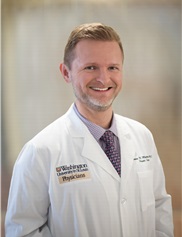Grants Funded
Grant applicants for the 2024 cycle requested a total of nearly $3 million dollars. The PSF Study Section Subcommittees of Basic & Translational Research and Clinical Research evaluated more than 100 grant applications on the following topics:

The PSF awarded research grants totaling over $650,000 dollars to support more than 20 plastic surgery research proposals.
ASPS/PSF leadership is committed to continuing to provide high levels of investigator-initiated research support to ensure that plastic surgeons have the needed research resources to be pioneers and innovators in advancing the practice of medicine.
Research Abstracts
Search The PSF database to have easy access to full-text grant abstracts from past PSF-funded research projects 2003 to present. All abstracts are the work of the Principal Investigators and were retrieved from their PSF grant applications. Several different filters may be applied to locate abstracts specific to a particular focus area or PSF funding mechanism.
Embryonic Stem Cells Preserve the Neuromuscular Junction
Terence Myckatyn MD
2004
Washington University
Basic Research Grant
Peripheral Nerve
The successful reconstruction of motor peripheral nerves depends upon the selective reinnervation of motor targets and the receptiveness of the neuromuscular junction to reinnervation. Noting that denervated muscle is receptive to inputs from regenerating axons for up to one year following nerve injury in humans and shorter time periods in rodents, a means of preserving denervated muscle for delayed reinnervation needs to be devised for an acceptable functional outcome to be rendered from primary nerve repair techniques. Otherwise, proximal or latently diagnosed peripheral nerve injuries must be reconstructed with tendon and nerve transfers that necessarily downgrade donor neuromuscular function to recover lost function. Embryonic stem (ES) cells are pluripotential cells that can serve a duel role in our approach to preserving, or "baby-sitting" denervated muscle. Firstly, ES cells provide a source of inducible cells that can be transplanted to replace lost tissue. Secondly, ES cells are an extremely versatile research tool that can be genetically manipulated to upregulate or down regulate numerous proteins and transcription factors and allow us to study the mechanisms involved with muscle innervation and denervation. We hypothesize that ES cells, transplanted near the neuromuscular junction, wiJ1 keep the neuromuscular junction receptive to regenerating motor axons for significantly longer periods compared with experimental subjects not receiving ES cell transplants. From a mechanistic perspective, we hypothesize that denervated muscles and Schwann cel1s wi11 maintain patterns of transcription factor expression that more closely resemble innervated than denervated muscle in the presence of motor neuron-induced ES cell transplants. To test these hypotheses, our goals are to demonstrate that muscle cannot be reinnervated in a mouse model after 3 months of denervation. We will demonstrate this with functional techniques including walking track analysis, immunohistochemical techniques including a-Bungarotoxin and acetyl choline receptor (AChR) staining, and molecular techniques by quantifying the expression of the muscle regulatory factors myogenin, and Id-l and the neurotrophins NT -3 and NT -4. Transplants of ES cells, induced down a motor neuron lineage are then introduced into this denervated mouse model. Transplants of motor neuron-induced ES cells will enable denervated muscle to maintain an innervated phenotype as characterized by our immunohistochemical and molecular markers. Moreover, nerve repair conducted at least 3 months after injury, with latent reinnervation of motor targets will result in significant functional recovery only in subjects pretreated with motor neuron-induced ES cells. Findings from these studies will have applicability not only to proximal or latently diagnosed peripheral nerve injuries, but also injuries to the spinal cord where reconstructive strategies will also require a receptive neuromuscular junction.
 I received my undergraduate, medical school and preliminary general surgery training at the University of British Columbia before completing a plastic surgery residency and peripheral nerve research fellowship at Barnes Hospital/Washington University. I have received competitive research awards by the American College of Surgeons and American Association of Plastic Surgeons and was promoted to Professor at Washington University. My research background transitioned from studying nerve regeneration basic science to clinical outcomes research in breast reconstruction and cosmetic surgery, reflecting my clinical practice. My recent studies include a multicenter study, funded by the Plastic Surgery Foundation examining the clinical impact of fat transfer on breast cancer recurrence, and a randomized prospective trial examining the impact of incision location on clinical and patient reported outcomes in women undergoing nipple-sparing mastectomy with implant-based breast reconstruction. A key area of my research is examining the microbiome associated with reconstructive and cosmetic breast implants. I reported on the diverse microbiome causing breast implant infections at our facility and studied the impact of acellular dermal matrices on bacterial biofilms in reconstructive breast implant surgery. I have established a collaboration with Dr. Scott Hultgren, a world-expert in infectious disease in women, here at Washington University to advance this field in plastic surgery.
I received my undergraduate, medical school and preliminary general surgery training at the University of British Columbia before completing a plastic surgery residency and peripheral nerve research fellowship at Barnes Hospital/Washington University. I have received competitive research awards by the American College of Surgeons and American Association of Plastic Surgeons and was promoted to Professor at Washington University. My research background transitioned from studying nerve regeneration basic science to clinical outcomes research in breast reconstruction and cosmetic surgery, reflecting my clinical practice. My recent studies include a multicenter study, funded by the Plastic Surgery Foundation examining the clinical impact of fat transfer on breast cancer recurrence, and a randomized prospective trial examining the impact of incision location on clinical and patient reported outcomes in women undergoing nipple-sparing mastectomy with implant-based breast reconstruction. A key area of my research is examining the microbiome associated with reconstructive and cosmetic breast implants. I reported on the diverse microbiome causing breast implant infections at our facility and studied the impact of acellular dermal matrices on bacterial biofilms in reconstructive breast implant surgery. I have established a collaboration with Dr. Scott Hultgren, a world-expert in infectious disease in women, here at Washington University to advance this field in plastic surgery.